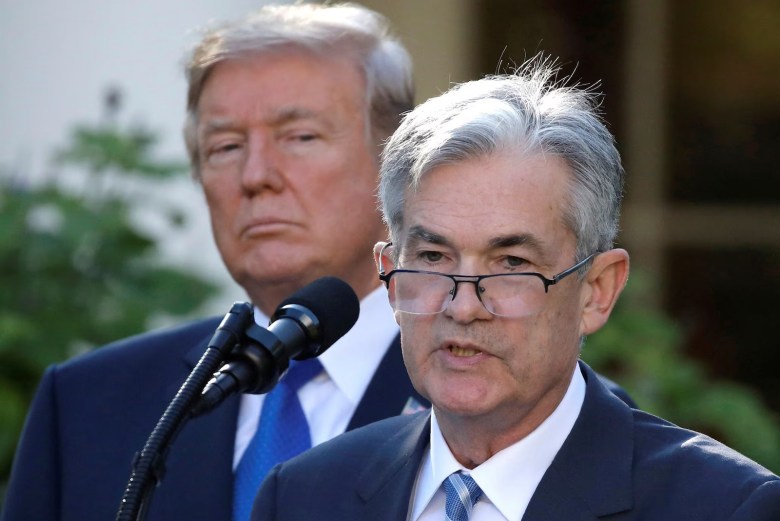Business
Federal Reserve Cuts Interest Rates, Uncertainty Ahead for Economy

The Federal Reserve has announced a **quarter-point cut** in interest rates, a move designed to support farmers and business borrowers facing economic uncertainty. This decision, made during the Federal Open Market Committee (FOMC) meeting in mid-September, brings the benchmark federal funds rate down to a range of **4% to 4.25%**. With signs of a weakening job market, the cut was widely anticipated, especially following comments from Fed Chair **Jerome Powell** last month.
During the meeting, **11 of the 12** voting FOMC members supported the cut, while one member advocated for a more aggressive **half-point reduction**. The broader committee, which includes **19 members** comprising seven Fed governors and twelve Federal Reserve bank presidents, expressed varied views on future rate adjustments. In the “dot plot” projections, **ten members** forecast at least two additional quarter-point cuts this year, while two members anticipate only one cut and seven predict no further reductions.
As recently as last year, the Fed had maintained stable interest rates after a series of aggressive cuts, including a **full percentage point** reduction in the last four months of **2024**. The Fed’s dual mandate focuses on achieving maximum employment and price stability. Although employment metrics look solid, inflation remains stubbornly above the **2%** target, leading the Fed to adopt a cautious approach towards monetary policy.
At his post-meeting press conference, Powell acknowledged that the balance of risks has shifted but indicated that it does not warrant a rapid series of cuts. The median Gross Domestic Product (GDP) forecast among FOMC members is **1.6%** growth for this year, with a slight increase to **1.8%** next year, reflecting a slow but not recessionary outlook. Powell noted these projections are somewhat more optimistic than previous estimates.
In a notable dissent, **Stephen Miran**, who has served as chair of President **Donald Trump**’s Council of Economic Advisors, pushed for a more substantial half-point cut. Trump’s administration has been applying increasing pressure on the Fed for rapid rate reductions, even attempting to replace Fed Governor **Lisa Cook** with a nominee perceived as more favorable to his stance. Critics argue that such pressure risks undermining the Fed’s autonomy.
Powell emphasized the importance of making decisions based on economic data rather than political influences, stating that this principle is ingrained in the Fed’s operations. Trump’s comments suggest he supports Fed independence but believes the institution should heed advice from experienced individuals, including himself. Analysts caution that excessive political pressure could backfire, potentially raising inflation concerns among bond investors, who might react by increasing long-term interest rates.
Currently, the Fed’s influence predominantly affects short-term rates, while long-term rates, which are crucial for farmers and business borrowers, are determined by the bond market. The uncertainty surrounding how far the Fed will lower interest rates continues to loom, with Trump advocating for rates to drop several percentage points. This scenario could push inflation-adjusted rates into negative territory.
Traditionally, the Fed aims for a “neutral” interest rate—one that neither stimulates nor restrains the economy. While the exact neutral rate is elusive and likely shifts over time, it is often estimated to be about one percentage point above the inflation rate. Given the Fed’s inflation target of **2%**, the neutral rate has typically been around **3%**.
Most members of the FOMC expect the federal funds rate to remain between **3% and 4%** over the next three years, with none predicting it will drop below **2.3%**. The median projections indicate a rate of **3.6%** by the end of **2024**, declining to **3.4%** in **2026** and **3.1%** in **2027**. These forecasts are subject to change based on evolving economic conditions.
In response to inquiries regarding the confidence in these forecasts, Powell remarked, “Forecasters are a humble lot with much to be humble about.” The landscape ahead for interest rates remains uncertain, reflecting the complexity of the current economic climate.
-

 Business5 months ago
Business5 months agoKenvue Dismisses CEO Thibaut Mongon as Strategic Review Advances
-

 Lifestyle4 months ago
Lifestyle4 months agoHumanism Camp Engages 250 Youths in Summer Fest 2025
-

 Sports4 months ago
Sports4 months agoDe Minaur Triumphs at Washington Open After Thrilling Comeback
-

 Sports5 months ago
Sports5 months agoTupou and Daugunu Join First Nations Squad for Lions Clash
-

 Top Stories5 months ago
Top Stories5 months agoColombian Senator Miguel Uribe Shows Signs of Recovery After Attack
-

 World5 months ago
World5 months agoASEAN Gears Up for Historic Joint Meeting of Foreign and Economic Ministers
-

 Health4 months ago
Health4 months agoNew Study Challenges Assumptions About Aging and Inflammation
-

 Business5 months ago
Business5 months agoOil Prices Surge Following New EU Sanctions on Russia
-

 Entertainment4 months ago
Entertainment4 months agoDetaşe-Sabah Violin Ensemble Captivates at Gabala Music Festival
-

 Entertainment4 months ago
Entertainment4 months agoBaku Metro Extends Hours for Justin Timberlake Concert
-

 Top Stories5 months ago
Top Stories5 months agoRethinking Singapore’s F&B Regulations Amid Business Closures
-

 Business5 months ago
Business5 months agoU.S. House Approves Stablecoin Bill, Sends to Trump for Signature









